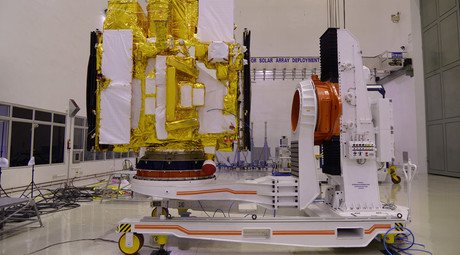India’s innovative space shuttle set to slash launch costs

India wants to join a select band of nations that have a space shuttle program. The country’s space agency wants to launch a reusable spacecraft, potentially slashing the cost of space travel.
The plans are very much in their infancy, but the Indian Space Research Organization (ISRO) has big plans. It wants to tap into the lucrative market of reusable space travel by building its very own fleet of spacecraft.
The first step in the ambitious plans is to send a test vehicle into space. The craft, roughly the size of a sports utility vehicle (SUV), is being given a final look through before it is expected to blast off on its mission. This test vehicle is roughly one-sixth the size of the final version.
The test craft will not have an undercarriage, but point of the experiment is to see if it will be able to navigate at a velocity five times the speed of sound, onto a virtual runway in the Bay of Bengal, around 500 kilometers from the coast.
"These are just the first baby steps towards the big Hanuman leap,” said K Sivan, the director of the Vikram Sarabhai Space Center, situated on the coast of the Bay of Bengal, told the Press Trust of India. Hanuman is a Hindu god.
However, it is going to be some time until the final version could be seen blasting off from its launch site on the east coast of India. It is expected that it will take at least 10-15 years for the prototype to be converted into the real thing.
The spacecraft, known as the RLV-TD (Reusable Launch Vehicle -Technology Demonstrator) will eventually be around 6.5 meters in length and will weigh 1.75 tons. It will enter the earth’s atmosphere via a special booster.
The vehicle will descend back to Earth, which will essentially see it glide back, with small thrusters helping to move it to its exact landing point. The ISRO will have to invest in a runway, though, as there is no landing strip in the country that is over 5 kilometers in length.
The ISRO says that if the project is a success, it could revolutionize space travel, by reducing costs by as much as 10 times through the use of reusable technology. This could see the cost of transporting materials into space cut to around $2,000 per kilogram.
The Indian program has received help from the government, which has invested around $15 million in the project, which has been running for the last five years.
If the technology proves to be successful, even at its prototype stage, it could be a further blow to the US private space program, which is already crying foul that Indian booster rockets produced by the ISRO are being used to send American-made satellites into space.
"In this case, India, [is seeking] to compete with US companies. Such a policy runs counter to many national priorities and undermines the work and investment that has been made by the government and industry to ensure the health of the US commercial space launch industrial base," said Elliot Holokauahi Pulham, CEO of Space Foundation, according to The Times of India.
Following the grounding of the US space shuttle program in 2011, the US has been reliant on Russia and the private enterprise Space-X to get its hardware into orbit or to dock with the International Space Station.
In comments to RT, Sreeram Chaulia, professor at the Jindal School of International Affairs, said the Indian space industry has been enjoying a great period recently thanks to government funding, while also having cheap labor and production costs at its disposal.
“In the last three years we’ve been in a sweet spot: we’ve launched 28 satellites of nine countries – all at economical costs and with a high success rate,” he said.
He also played down US fears of the Indian government subsidizing the ISRO’s space program, saying that if America is so worried, Congress should get involved.
“If the American companies are unable to compete that’s how they cry out… we are subsidizing, that Congress should get in. So, I think unfortunately they are playing with the protectionist instincts of some politicians in Congress. And I hope that they will not go down the line trying to [ban] it because at the end of the day American companies that want their satellites launched benefit from Indian facilities,” he said.
















